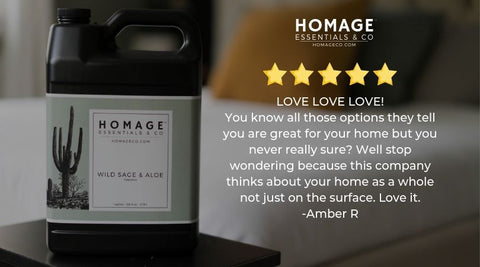
Hydrogen peroxide is widely known as an extremely safe and effective disinfectant that can be used all over your home. Chances are if you've ever sprayed a hydrogen peroxide cleaner on a moldy or germ laden surface, you have witnessed bubbles and foaming on that surface.
So what exactly is that foam, and what causes it?
Hydrogen peroxide is much like water, but it has an extra unstable oxygen molecule. Peroxide bubbles when in contact with many living organisms due to the presence of an enzyme called catalase. Almost every living tissue contains catalase, and this enzyme is also available in plant cells such as tubers. This enzyme acts as a catalyst that speeds the breakdown of hydrogen peroxide into water and releases that extra unstable oxygen molecule as gas. The bubbles and foam you see is pure oxygen that is released from this process.
How does the reaction kill germs?
Hydrogen peroxide is also an effective antibacterial agent agains many germs, including a common aerobic bacteria called staphylococci. Hydrogen peroxide's extra oxygen molecule steals electrons from the cellular walls of these, and other living organisms, severely damaging or killing them. Because bacteria, fungus, and many other living organisms have the catalase enzyme, they are able to fight back and neutralize the hydrogen peroxide by breaking it down into water and oxygen. Once the catalase is all used up, the organism's defense system is gone and is fully exposed to the destructive effects of the peroxide.
And since hydrogen peroxide possesses a non-discriminating ability to kill, it's not recommended to use on open wounds. It kills healthy cells, and damages platelets and connective tissues, and as a result can severely inhibit the body's ability to repair itself.
It's also really important to remember that just because you don't see foaming, it doesn't mean that hydrogen peroxide isn't killing, or that germs aren't present. It just means that there is no catalase. Some cells and most viruses don't produce catalase, but that doesn't mean that hydrogen peroxide is not actively killing them. It just means that they don't have the ability to fight the peroxide off.
Looking for a great cleaner with powerful hydrogen peroxide and amazing scents? Look no further! Check out some of our top rated products below!



